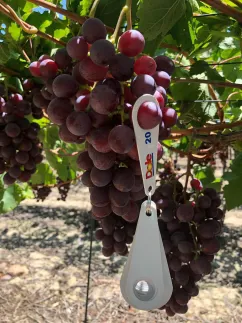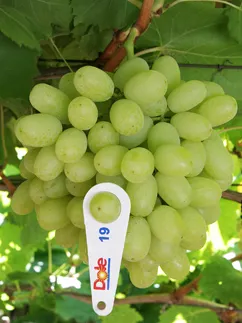The South African grape season is coming to an end. This year's campaign took place in two phases. “The northern regions and Orange River came into production first, with a significant volume deficit. At the beginning of the campaign, exports were clearly lower than in previous years at the same period (about -30%). This led to a very tense market with relatively high prices, especially for seedless white grapes, even if France is not South Africa’s preferred destination in the first part of the campaign,” explains Timothée Levesque of Dole France.
Second part of the campaign made up for the first one
Then, everything changed when the Hex River region went into production. “The limited supply made way for good volumes and sizes as well as great market conditions. The rosé grapes, for example, had very large calibers this year, which is very much appreciated on the French market. Generally speaking, the quality was great and the low supply at the beginning of the campaign led to better consumption levels in the second part. This lack of volume actually created rather virtuous sales dynamics and historically high prices throughout the campaign.” The second part of the campaign therefore largely compensated for the slow start of the season.
A good interweaving of origins
The different origins are well intertwined this year, allowing to compensate for the lack of products at the beginning of the season, especially for the South African origin. “Peru arrived right before Christmas. The Red Globe and white grape varieties remained on the market for a long time, which made up for the lack of volume at the beginning of the South African season. The Peruvian origin coincided with the beginning of the Hex River production.” And now, Chile will take over from South Africa in about 10 days.


Confirmed trends
Two trends have been confirmed during this 2022/2023 season. “We can clearly see that the white grape variety Autumn Crisp has started to take the lead over both Peru and South Africa. It is now the main variety, occupying an important place in the imported volumes of white grapes. It also has the advantage of being present in the majority of the world's production areas, which gives a regular availability throughout the year.” The second observation is that the traditional black seeded grape varieties have practically disappeared. “This trend was already underway but this year, black seeded grapes were almost totally absent through the entire South African season.”
For more information:
Timothée Levesque
Dole France – Groupe Dole
[email protected]










